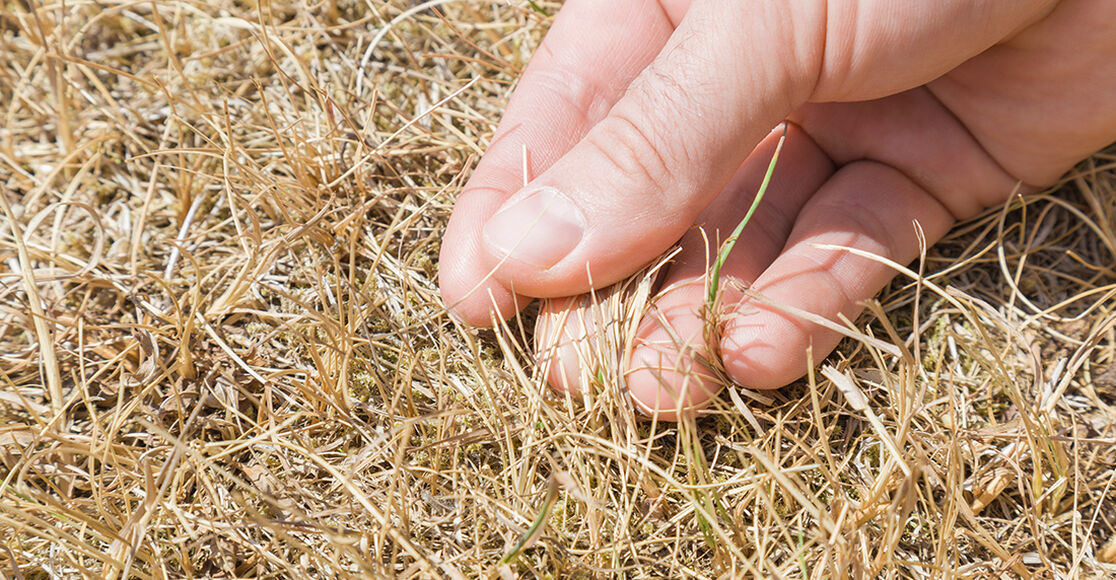If the summer sun and heat have wreaked havoc on your lawn, leaving it dry and scorched yellow in spots, then there are some steps on how to fix burnt grass.
To get burnt grass green again, you must first figure out what caused the dry brown or yellow spots in your grass so you can determine what it needs most. You’ll also want to determine whether the grass is completely dead or has simply gone dormant.
Diagnosing Fertilizer Burn Issues
If you recently fertilized the grass, then you may have used the wrong type of fertilizer, put too much fertilizer on your lawn, or applied it at the wrong time. All these situations can potentially lead to fertilizer burns. Fertilizer burn looks like sections of grass with brown tips, grass with yellow or brown streaks, or yellow sections of grass.
How to Fix Fertilizer Burn
You may be able to correct grass fertilizer burn if the roots haven’t completely died. To reverse lawn fertilizer burn, try lightly watering these areas to help remove and wash away the excess fertilizer or nutrients. After several days, you may notice that the grass will begin to green up. If it doesn’t, then the grass roots have likely died, and you’ll need to reseed those sections. Explore these fall lawn fertilizer tips to get a head start on the perfect lawn.
Identifying Lawn Diseases
People often wonder what lawn diseases look like. In some cases, tan or discolored lawn patches can also signal a common lawn disease, such as Dollar Spot, Brown Patch, Red Thread or Rust. Often, these diseases are caused by too much water, not enough water, or heavy thatch buildup – more than a ½" thick – on the grass.
How to Treat Lawn Diseases
You can help correct these types of grass diseases by watering correctly, adjusting your mower height, reducing foot traffic, and fertilizing properly. If you believe thatch buildup is contributing to your problem, then you may also need to plan on dethatching your lawn during a time of year when it is actively growing and not too dry.
How to Get Sunburned Grass Green Again
Grass that looks brown or slightly yellowed throughout or in patches may be afflicted by sun-scorch. To correct the scorched grass in your lawn, you may have better results by waiting until temperatures cool slightly, such as late summer and early fall. At this point, moisture levels in the soil may be higher and the grass will be under less stress overall.
How to Fix Sunburned Grass
People often wonder how to treat burnt grass from the sun. The first step in reviving sunburned grass is increasing moisture levels in the grass because the lawn may benefit from deep waterings that occur at least once or twice a week. At least an inch of water should be provided over the entire lawn each week. Over time, the sunburned grass should begin to green again.
If there are spots or sections of your lawn that appear to be more sunburned than others, then you’ll want to water those areas during cooler times of the day, particularly the morning hours, to ensure the water reaches the roots. You may also want to cut back on mowing those areas and stay off those parts of the lawn.
If the dried, burnt areas are limited to small bare patches in the lawn, then you may be able to encourage growth there by watering them generously and fertilizing those areas. However, be aware that fertilizing grass during hot weather can make grass less tolerant to heat.
If the burnt grass sections don’t regrow, or if you have large bare patches, then you can also remove the burnt sections and plant new grass seed. When removing the burnt grass, you’ll want to remove a layer of soil as well, replacing it with a layer of fresh soil. To reseed bare spots, rake the area before seeding and apply a layer of topsoil to help encourage seed germination. After seeding, cover the soil surface with a layer of hay to prevent the seeds from being eaten or washed away. Water the area thoroughly for a few weeks until the grass begins to grow.
With these steps, you should be able to diagnose and fix most cases of scorched or burnt grass, repair damaged areas, and help improve the overall health, resilience and look of your lawn.
